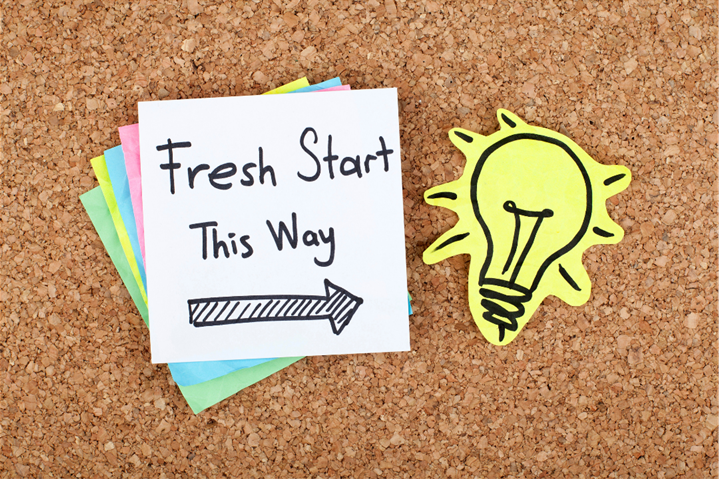Every day we hear the results of another study, telling us what is making us unhealthy. Eat this, don’t eat that. Move like this, not like that. It can be overwhelming to figure out what to prioritize or even where to begin.
Awareness. This is where it all starts. We see things more clearly when we take a step back and give them our undivided attention. Take a few moments each day to breathe. Just be. Relax. In doing so, the busyness of the world, the noise of our self-talk, the daily to do list, they all disappear and we are simply left with ourselves and the truth. Layers of thought, emotion, and even traumatic events are often responsible for the “dis-ease” that causes disease. Without going through this process, it may not matter what changes we make to our nutrition or exercise habits. Our bodies seek balance. This applies to our emotional state as well. When we are out of balance, there are a whole host of physiological processes that go off-line as well.
Unfortunately, the typical American lifestyle does not lend itself to mind-body balance. Change is hard. Crazy hard. It’s really inconvenient. It is human nature to take the path of least resistance. It takes time and effort to change the way we live our lives. For most of us, this is where we end up – in a state of knowing we need to do something but not believing that we can really do anything about it. To be successful, we need to make the changes to our habits small, easy-to-adopt, and enjoyable.
Tips for Successful Behavior Change
Why we want to make changes is almost as important as what we want to change. The “why” often determines our chances for success. If we are making a change for our spouse or boss, or as a quick fix (think high school reunion), we might not be as emotionally invested as we need to be successful over the long term. You need to have good reasons to make any lasting change. Maybe it is to be around to see your kids or grandkids grow up or maybe it is about improving your quality of life. Whatever it is, it needs to be meaningful to you.
Setting SMART goals is key to successful behavior change. SMART is an acronym for research-based characteristics that significantly increase the likelihood of reaching one’s goals. They should be:
- Specific
- Measurable
- Attainable
- Relevant
- Time-Bound
For example, if I want to walk 2 miles a day but am currently completely sedentary, I need to break down my goal into manageable pieces. I also need to be realistic. How far can I, and more importantly, will I, walk each day. Maybe it is just a daily walk to my mailbox for the first week. Then, I can walk to the end of the block, then 3 blocks, and so on until I have achieved my goal. It is important to set a time frame for each level of goal attainment. This can be daily or weekly. It needs to be short enough to generate immediate success but also long enough to form a new habit as a foundation for the next step and that usually takes about 8-10 weeks.
Work with your strengths and interests when approaching changes. If you like to cook, then it makes sense to find healthy recipes you would enjoy making. If you hate cooking, it will be important to simplify what nutrition changes you are making so that you can still be successful. It can be as simple as choosing the prepared veggie tray and a container of hummus from the grocery store. This principle is especially important when it comes to physical activity. If you enjoy being outdoors, consider walking or hiking. If you like people, music or dancing, you could join a group fitness class. If you want something more mindful, try Tai Chi, Qigong or Yoga. The key is to look for ways to integrate a positive, healthy change with your personality, interests and strengths.
One of the reasons people struggle with behavior change is because they have been unsuccessful in the past. Three common reasons for this are 1) Setting unrealistic goals 2) Giving up after the first setback, or 3) Taking on too many changes at once.
To avoid these, it is important to set a narrow list of ridiculously small goals. This allows us to celebrate mini victories which perpetuate future successes. BJ Fogg, a researcher at Stanford University, recommends starting with what he calls “Tiny Habits.” He uses an example for someone who wants to develop the habit of flossing their teeth. He suggests flossing one tooth each night after brushing your teeth. Just one tooth. A small, simple act is perceived as more doable and we may be more likely to persist and build on that activity. This is a very real characteristic of human nature and it explains a lot when it comes to why behavior change is so difficult.
To summarize, there are some tricks to successful behavior change:
- Become aware of what you want to change and why
- Set SMART goals
- Make changes that fit your personality, strengths and values
- Start small (REALLY small) and build on your successes
AUTHOR: Michelle Jenck, M.Ed., Community Well-Being Director, Adventist Health Tillamook
For more local health and wellness information, follow Tillamook County Wellness on Facebook, Instagram and Twitter.

